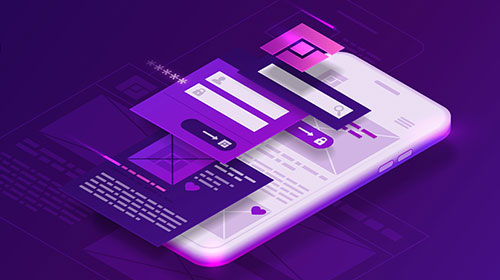Mobile App Development: Processes, Benefits, and Key Components
Mobile app development is the process of designing, building, and maintaining applications for mobile devices, including smartphones and tablets. With the increasing reliance on mobile technology, businesses must leverage mobile apps to enhance customer engagement, streamline operations, and improve digital accessibility.
Key Components of Mobile App Development
- Front-End Development: The front-end is the user interface and experience of the mobile app. It includes:
- UI/UX design for intuitive navigation and functionality.
- Frameworks such as React Native, Flutter, or Swift UI.
- Performance optimization to ensure smooth app functionality.
- Back-End Development: The back-end manages server-side processes, databases, and APIs, ensuring that the app functions efficiently. Key technologies include:
- Node.js, Python, Ruby on Rails for server-side logic.
- Cloud storage and database management (Firebase, PostgreSQL, MySQL).
- API integrations for enhanced functionality and third-party services.
- Mobile App Security: Security is crucial to protect user data and app integrity. Important measures include:
- Data encryption and secure authentication (OAuth, JWT).
- Regular security updates and compliance with industry standards.
- Secure payment gateways for e-commerce apps.
- Cross-Platform vs. Native Development:
- Native Apps: Developed specifically for iOS or Android, using Swift (iOS) or Kotlin (Android), ensuring high performance and integration with device features.
- Cross-Platform Apps: Built using frameworks like Flutter, React Native, or Xamarin, allowing a single codebase to run on multiple platforms.
Mobile App Development Process
1. Idea and Market Research
Understanding the target audience, competitors, and market demand is crucial before starting development.
2. Planning and UI/UX Design
- Wireframing and prototyping to visualize app functionality.
- User experience (UX) design to ensure seamless interactions.
- Branding and interface aesthetics.
3. Development
- Front-end development: Coding the app’s user interface.
- Back-end development: Setting up databases, APIs, and server-side operations.
- Integration: Connecting third-party services like payment gateways, social media, or analytics tools.
4. Testing
- Functional testing to ensure smooth performance.
- Compatibility testing across different devices and operating systems.
- Security testing to prevent vulnerabilities.
5. Deployment
- Publishing the app on platforms like the Apple App Store and Google Play Store.
- Setting up app store optimization (ASO) for better visibility.
6. Maintenance and Updates
- Regular bug fixes and performance enhancements.
- Adding new features based on user feedback.
- Ensuring compatibility with the latest OS updates.
Benefits of Mobile App Development
- Enhanced User Engagement: Mobile apps provide direct access to customers, improving interaction and engagement.
- Brand Loyalty: Personalized experiences and push notifications help retain users.
- Increased Revenue: E-commerce apps, in-app purchases, and subscription models drive business growth.
- Improved Efficiency: Internal business apps streamline operations and increase productivity.
- Competitive Advantage: A custom app sets businesses apart from competitors and offers unique functionalities.
- Scalability: Apps can be upgraded with new features to meet evolving business needs.
Conclusion
Mobile app development is essential for businesses looking to expand their digital presence and improve user engagement. Whether developing a native or cross-platform app, following best practices ensures a scalable, secure, and high-performing application. Investing in professional mobile app development services can help businesses stay ahead in today’s mobile-first world.


